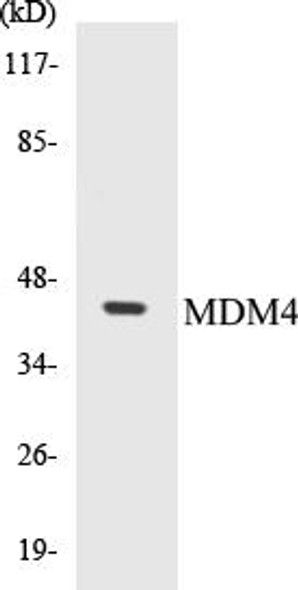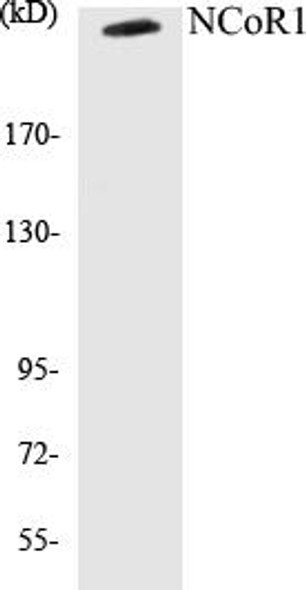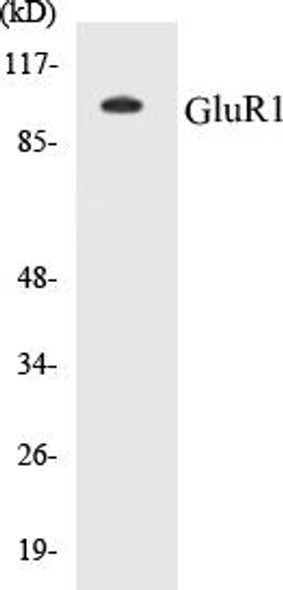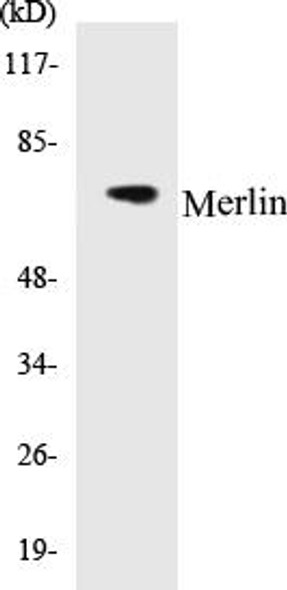HDAC3 Colorimetric Cell-Based ELISA Kit
- SKU:
- CBCAB00178
- Product Type:
- ELISA Kit
- ELISA Type:
- Cell Based
- Research Area:
- Cell Biology
- Reactivity:
- Human
- Mouse
- Rat
- Detection Method:
- Colorimetric
Description
HDAC3 Colorimetric Cell-Based ELISA Kit
The HDAC3 Colorimetric Cell-Based ELISA Kit from Assay Genie is a powerful tool for studying the activity of histone deacetylase 3 in cell cultures. This kit enables researchers to accurately measure HDAC3 levels in cell lysates, providing valuable insights into the regulation of gene expression and the dynamics of epigenetic modifications.HDAC3 is a key player in epigenetic regulation, controlling the acetylation status of histones and influencing gene transcription. Dysregulation of HDAC3 activity has been linked to various diseases, including cancer, cardiovascular disorders, and neurological conditions.
By using the HDAC3 Colorimetric Cell-Based ELISA Kit, researchers can gain a better understanding of the role of HDAC3 in disease development and progression.With its high sensitivity and specificity, this kit delivers reliable and reproducible results, making it a valuable resource for a wide range of research applications. Whether studying basic mechanisms of gene regulation or exploring potential therapeutic targets, the HDAC3 Colorimetric Cell-Based ELISA Kit offers a convenient and accurate solution for investigating the complex role of HDAC3 in cellular processes.
| Product Name: | HDAC3 Colorimetric Cell-Based ELISA |
| Product Code: | CBCAB00178 |
| ELISA Type: | Cell-Based |
| Target: | HDAC3 |
| Reactivity: | Human, Mouse, Rat |
| Dynamic Range: | > 5000 Cells |
| Detection Method: | Colorimetric 450 nmStorage/Stability:4°C/6 Months |
| Format: | 96-Well Microplate |
The HDAC3 Colorimetric Cell-Based ELISA Kit is a convenient, lysate-free, high throughput and sensitive assay kit that can detect HDAC3 protein expression profile in cells. The kit can be used for measuring the relative amounts of HDAC3 in cultured cells as well as screening for the effects that various treatments, inhibitors (ie siRNA or chemicals), or activators have on HDAC3.
Qualitative determination of HDAC3 concentration is achieved by an indirect ELISA format. In essence, HDAC3 is captured by HDAC3-specific primary antibodies while the HRP-conjugated secondary antibodies bind the Fc region of the primary antibody. Through this binding, the HRP enzyme conjugated to the secondary antibody can catalyze a colorimetric reaction upon substrate addition. Due to the qualitative nature of the Cell-Based ELISA, multiple normalization methods are needed:
| 1. | A monoclonal antibody specific for human GAPDH is included to serve as an internal positive control in normalizing the target absorbance values. |
| 2. | Following the colorimetric measurement of HRP activity via substrate addition, the Crystal Violet whole-cell staining method may be used to determine cell density. After staining, the results can be analysed by normalizing the absorbance values to cell amounts, by which the plating difference can be adjusted. |
| Database Information: | Gene ID: 8841, UniProt ID: O15379, OMIM: 605166, Unigene: Hs.519632 |
| Gene Symbol: | HDAC3 |
| Sub Type: | None |
| UniProt Protein Function: | HDAC3: Responsible for the deacetylation of lysine residues on the N-terminal part of the core histones (H2A, H2B, H3 and H4), and some other non-histone substrates. Histone deacetylation gives a tag for epigenetic repression and plays an important role in transcriptional regulation, cell cycle progression and developmental events. Histone deacetylases act via the formation of large multiprotein complexes. Probably participates in the regulation of transcription through its binding to the zinc-finger transcription factor YY1; increases YY1 repression activity. Required to repress transcription of the POU1F1 transcription factor. Acts as a molecular chaperone for shuttling phosphorylated NR2C1 to PML bodies for sumoylation. Interacts with HDAC7 and HDAC9. Forms a heterologous complex at least with YY1. Interacts with DAXX, HDAC10 and DACH1. Found in a complex with NCOR1 and NCOR2. Component of the N-Cor repressor complex, at least composed of NCOR1, NCOR2, HDAC3, TBL1X, TBL1R, CORO2A and GPS2. Interacts with BCOR, MJD2A/JHDM3A, NRIP1, PRDM6 and SRY. Interacts with BTBD14B. Interacts with GLIS2. Interacts (via the DNA-binding domain) with NR2C1; the interaction recruits phosphorylated NR2C1 to PML bodies for sumoylation. Component of the Notch corepressor complex. Interacts with CBFA2T3 and NKAP. Interacts with APEX1; the interaction is not dependent on the acetylated status of APEX1. Interacts with and deacetylates MAPK14. Interacts with ZMYND15. Widely expressed. Belongs to the histone deacetylase family. HD type 1 subfamily. 2 isoforms of the human protein are produced by alternative splicing. |
| UniProt Protein Details: | Protein type:Transcription, coactivator/corepressor; Deacetylase; EC 3.5.1.98; Cell cycle regulation; Apoptosis; Nuclear receptor co-regulator Chromosomal Location of Human Ortholog: 5q31 Cellular Component: nucleoplasm; Golgi apparatus; transcriptional repressor complex; spindle microtubule; histone deacetylase complex; cytoplasm; plasma membrane; nucleus Molecular Function:chromatin DNA binding; histone deacetylase binding; protein deacetylase activity; transcription factor binding; cyclin binding; NAD-dependent histone deacetylase activity (H3-K9 specific); protein binding; enzyme binding; NAD-dependent histone deacetylase activity (H3-K14 specific); NAD-dependent histone deacetylase activity (H4-K16 specific); chromatin binding; histone deacetylase activity; transcription corepressor activity Biological Process: circadian rhythm; negative regulation of JNK cascade; Notch signaling pathway; establishment and/or maintenance of chromatin architecture; nerve growth factor receptor signaling pathway; transcription, DNA-dependent; regulation of mitotic cell cycle; regulation of multicellular organism growth; regulation of protein stability; chromatin modification; negative regulation of transcription from RNA polymerase II promoter; spindle assembly; cellular lipid metabolic process; negative regulation of cell cycle; protein amino acid deacetylation; positive regulation of transcription factor import into nucleus; positive regulation of transcription from RNA polymerase II promoter; positive regulation of protein amino acid phosphorylation; circadian regulation of gene expression; negative regulation of transcription, DNA-dependent; positive regulation of TOR signaling pathway; negative regulation of apoptosis |
| NCBI Summary: | Histones play a critical role in transcriptional regulation, cell cycle progression, and developmental events. Histone acetylation/deacetylation alters chromosome structure and affects transcription factor access to DNA. The protein encoded by this gene belongs to the histone deacetylase/acuc/apha family. It has histone deacetylase activity and represses transcription when tethered to a promoter. It may participate in the regulation of transcription through its binding with the zinc-finger transcription factor YY1. This protein can also down-regulate p53 function and thus modulate cell growth and apoptosis. This gene is regarded as a potential tumor suppressor gene. [provided by RefSeq, Jul 2008] |
| UniProt Code: | O15379 |
| NCBI GenInfo Identifier: | 3334210 |
| NCBI Gene ID: | 8841 |
| NCBI Accession: | O15379.2 |
| UniProt Secondary Accession: | O15379,O43268, Q9UEI5, Q9UEV0, D3DQE1, |
| UniProt Related Accession: | O15379 |
| Molecular Weight: | 49,111 Da |
| NCBI Full Name: | Histone deacetylase 3 |
| NCBI Synonym Full Names: | histone deacetylase 3 |
| NCBI Official Symbol: | HDAC3 |
| NCBI Official Synonym Symbols: | HD3; RPD3; RPD3-2 |
| NCBI Protein Information: | histone deacetylase 3; SMAP45 |
| UniProt Protein Name: | Histone deacetylase 3 |
| UniProt Synonym Protein Names: | RPD3-2; SMAP45 |
| Protein Family: | Histone deacetylase |
| UniProt Gene Name: | HDAC3 |
| UniProt Entry Name: | HDAC3_HUMAN |
| Component | Quantity |
| 96-Well Cell Culture Clear-Bottom Microplate | 2 plates |
| 10X TBS | 24 mL |
| Quenching Buffer | 24 mL |
| Blocking Buffer | 50 mL |
| 15X Wash Buffer | 50 mL |
| Primary Antibody Diluent | 12 mL |
| 100x Anti-Phospho Target Antibody | 60 µL |
| 100x Anti-Target Antibody | 60 µL |
| Anti-GAPDH Antibody | 60 µL |
| HRP-Conjugated Anti-Rabbit IgG Antibody | 12 mL |
| HRP-Conjugated Anti-Mouse IgG Antibody | 12 mL |
| SDS Solution | 12 mL |
| Stop Solution | 24 mL |
| Ready-to-Use Substrate | 12 mL |
| Crystal Violet Solution | 12 mL |
| Adhesive Plate Seals | 2 seals |
The following materials and/or equipment are NOT provided in this kit but are necessary to successfully conduct the experiment:
- Microplate reader able to measure absorbance at 450 nm and/or 595 nm for Crystal Violet Cell Staining (Optional)
- Micropipettes with capability of measuring volumes ranging from 1 µL to 1 ml
- 37% formaldehyde (Sigma Cat# F-8775) or formaldehyde from other sources
- Squirt bottle, manifold dispenser, multichannel pipette reservoir or automated microplate washer
- Graph paper or computer software capable of generating or displaying logarithmic functions
- Absorbent papers or vacuum aspirator
- Test tubes or microfuge tubes capable of storing ≥1 ml
- Poly-L-Lysine (Sigma Cat# P4832 for suspension cells)
- Orbital shaker (optional)
- Deionized or sterile water
*Note: Protocols are specific to each batch/lot. For the correct instructions please follow the protocol included in your kit.
| Step | Procedure |
| 1. | Seed 200 µL of 20,000 adherent cells in culture medium in each well of a 96-well plate. The plates included in the kit are sterile and treated for cell culture. For suspension cells and loosely attached cells, coat the plates with 100 µL of 10 µg/ml Poly-L-Lysine (not included) to each well of a 96-well plate for 30 minutes at 37°C prior to adding cells. |
| 2. | Incubate the cells for overnight at 37°C, 5% CO2. |
| 3. | Treat the cells as desired. |
| 4. | Remove the cell culture medium and rinse with 200 µL of 1x TBS, twice. |
| 5. | Fix the cells by incubating with 100 µL of Fixing Solution for 20 minutes at room temperature. The 4% formaldehyde is used for adherent cells and 8% formaldehyde is used for suspension cells and loosely attached cells. |
| 6. | Remove the Fixing Solution and wash the plate 3 times with 200 µL 1x Wash Buffer for five minutes each time with gentle shaking on the orbital shaker. The plate can be stored at 4°C for a week. |
| 7. | Add 100 µL of Quenching Buffer and incubate for 20 minutes at room temperature. |
| 8. | Wash the plate 3 times with 1x Wash Buffer for 5 minutes each time. |
| 9. | Add 200 µL of Blocking Buffer and incubate for 1 hour at room temperature. |
| 10. | Wash 3 times with 200 µL of 1x Wash Buffer for 5 minutes each time. |
| 11. | Add 50 µL of 1x primary antibodies (Anti-HDAC3 Antibody and/or Anti-GAPDH Antibody) to the corresponding wells, cover with Parafilm and incubate for 16 hours (overnight) at 4°C. If the target expression is known to be high, incubate for 2 hours at room temperature. |
| 12. | Wash 3 times with 200 µL of 1x Wash Buffer for 5 minutes each time. |
| 13. | Add 50 µL of 1x secondary antibodies (HRP-Conjugated AntiRabbit IgG Antibody or HRP-Conjugated Anti-Mouse IgG Antibody) to corresponding wells and incubate for 1.5 hours at room temperature. |
| 14. | Wash 3 times with 200 µL of 1x Wash Buffer for 5 minutes each time. |
| 15. | Add 50 µL of Ready-to-Use Substrate to each well and incubate for 30 minutes at room temperature in the dark. |
| 16. | Add 50 µL of Stop Solution to each well and read OD at 450 nm immediately using the microplate reader. |
(Additional Crystal Violet staining may be performed if desired – details of this may be found in the kit technical manual.)










